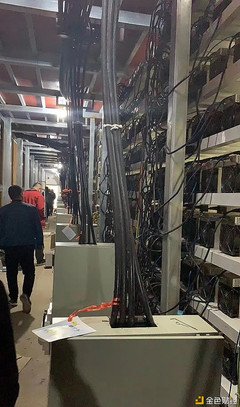
123 456 7890

test@example.com

123 456 7890

test@example.com
Mining Ethereum in Europe presents a unique blend of opportunities and challenges, demanding an adaptive strategy to maximize yields effectively. As Ethereum continues its exponential growth and transition toward proof-of-stake, miners and hosting services must scrutinize their operations closely. The fluctuating electricity costs, regulatory environments, and climatic conditions across European countries create a complex landscape. Understanding how to optimize every facet—from hardware selection to hosting logistics—becomes paramount for profitability and sustainability in this evolving ecosystem.
Firstly, selecting the most efficient mining rigs tailored to Ethereum’s algorithm can significantly affect output. ETH mining predominantly relies on GPUs, making rigs with cutting-edge graphics cards like the AMD Radeon RX 6000 series or Nvidia’s latest RTX lineup an advantageous choice. However, acquiring machines from a reputable supplier ensures reliability and longer operational lifespans. Investing in high-performance mining rigs that balance hash rates with power consumption underpins successful yield maximization.

Given the energy-intensive nature of Ethereum mining, cost-effective electricity sourcing is critical. Europe’s energy prices vary dramatically—Nordic countries like Sweden and Norway benefit from abundant hydropower, offering competitive rates, while other regions may impose steeper tariffs. Hosting mining machines in data centers or specialized mining farms within areas boasting low-cost, renewable energy sources not only curtails operational expenses but also aligns with environmental regulations and corporate social responsibility goals.
Mining hosting services have evolved into sophisticated solutions for miners who want to outsource their operational complexities. These services manage everything from physical maintenance and hardware upgrades to network security and cooling systems. By leveraging hosting farms located strategically in Europe, miners can mitigate risks related to downtime and variability in energy supply. Additionally, hosted mining reduces noise pollution and heat management hassles for individuals, providing a seamless, scalable solution tailored to fluctuating demand and technological advancements.

Beyond hardware and hosting, miners must remain vigilant regarding Ethereum’s protocol changes. The Ethereum 2.0 upgrade, shifting the network from proof-of-work to proof-of-stake, aims to drastically reduce environmental impact but simultaneously threatens traditional mining profitability. This impending shift compels miners and enterprises to diversify operations, perhaps transitioning to mining alternative cryptocurrencies compatible with GPU rigs, such as Ravencoin or Ergo, while anticipating protocol maturation. Staying abreast of blockchain developments and actively participating in community discourse equip miners with foresight necessary for strategic adaptation.
Equally critical is the role of cryptocurrency exchanges in managing yields effectively. Liquidity and exchange timing impact overall returns; thus, connecting with reputable, low-fee platforms enhances profitability. European miners often utilize exchanges that comply with local regulations to ensure transparent tax reporting and asset security. Utilizing decentralized finance (DeFi) platforms can also augment mining rewards through staking or liquidity provision, but miners must navigate risks like smart contract vulnerabilities carefully.
Security infrastructure remains indispensable across all mining operations. From safeguarding mined assets to protecting the mining rigs themselves against cyber threats, implementing multi-layered security practices is non-negotiable. VPNs, firewalls, secure wallets, and two-factor authentication stand as pillars of robust defense, while physical security within hosting farms prevents unauthorized access and hardware theft.
Moreover, analyzing the synergy between Bitcoin and Ethereum mining reveals contrasting dynamics. Bitcoin mining’s reliance on ASIC machines fosters a centralized industry dominated by massive mining farms, whereas Ethereum’s GPU-friendly algorithm promotes decentralization with smaller miners globally. The decision to focus solely on ETH or diversify into BTC or altcoins hinges on market trends and equipment versatility. Hybrid mining strategies, switching between coins based on profitability, necessitate adaptable rigs and sophisticated mining software.
Lastly, environmental considerations are increasingly influencing mining operations in Europe. With stringent carbon emission targets and rising public scrutiny, miners are incentivized to engage in green initiatives, such as utilizing renewable energy and optimizing hardware efficiency to minimize their carbon footprint. Coincidentally, this approach can reduce energy costs and attract investors keen on sustainable cryptocurrency ventures, further stabilizing financial yields over time.
In conclusion, maximizing Ethereum mining yields in Europe demands a multifaceted approach blending state-of-the-art mining rigs, strategic hosting decisions, adaptive coin mining, robust security practices, and environmental stewardship. Miners and hosting providers who embrace innovation and agility will thrive amid Ethereum’s transformative landscape, carving out sustainable profitability while navigating the dynamic spectrum of cryptocurrency possibilities.
Leave a Reply